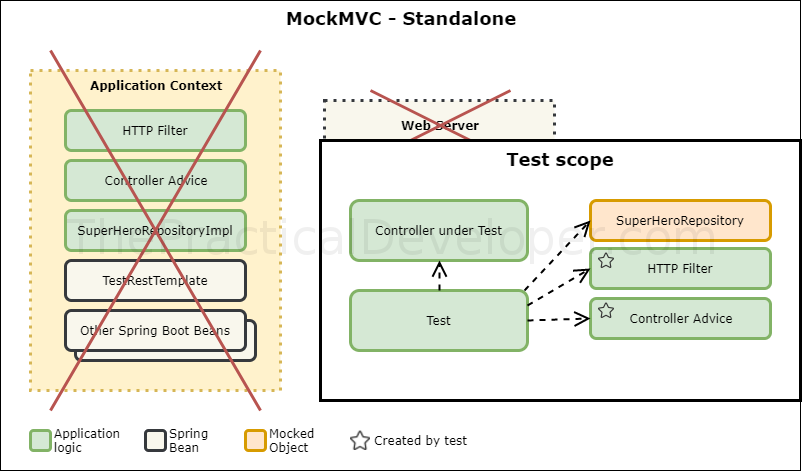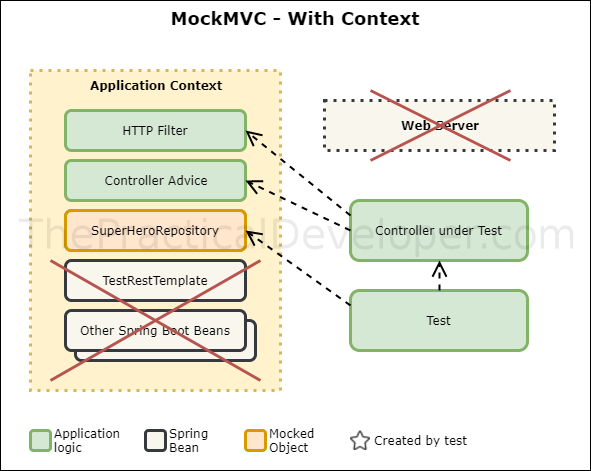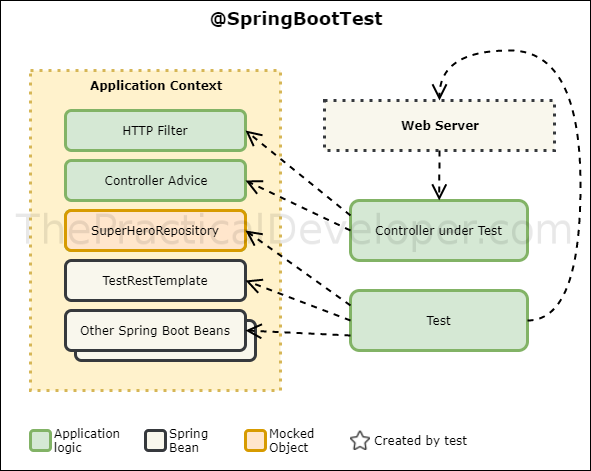This sample application made with Spring Boot is intended to show the different approach for testing, from Unit Tests with MockMVC in Standalone mode to full @SpringBootTest as Integration tests between the modules.
The complete guide is available on The Practical Developer Blog.
The logic behind the application is simple: it's a repository of superheroes that you can access through a REST API. It allows to read the available ones (which are hardcoded when the application starts up) and also add new members to the crew.
The architecture is simple: just the Controller layer (REST) and a SuperHeroRepository. To illustrate the differences when creating tests, there are two extra classes that work at a web layer level:
SuperHeroExceptionHandler. It's aControllerAdvicethat will transform aNonExistingHeroExceptioninto a404 NOT_FOUNDHTTP error code.SuperHeroFilter. This web filter adds a new header to the HTTP response.
In the test sources you can find four different approaches to test the Controller. SuperHeroControllerMockMvcStandaloneTest. Uses a MockitoJUnitRunner and it's the most lightweight approach.
Then you can find two approaches using a Spring context, both use MockMVC and one of them already introduces the @SpringBootTest annotation.
Finally, SuperHeroControllerSpringBootTest shows how to write a @SpringBootTest based test mocking other layers but utilizing the web server with a RestTemplate.
To check conclusion and more information please visit the blog.


